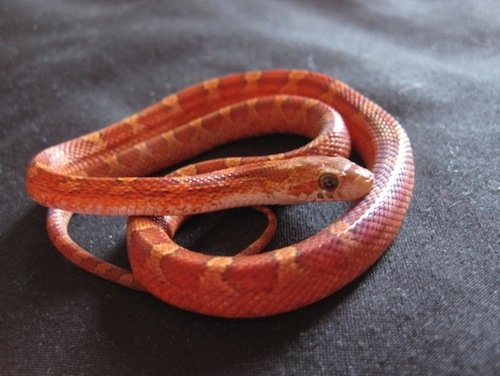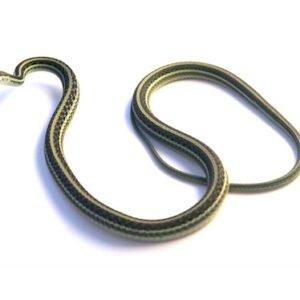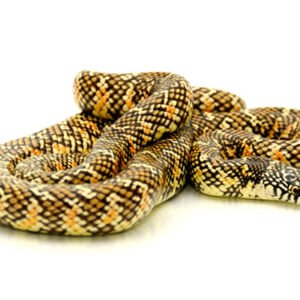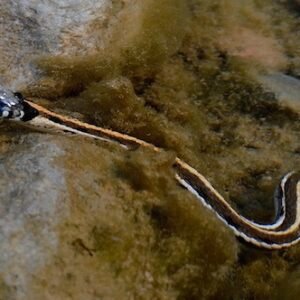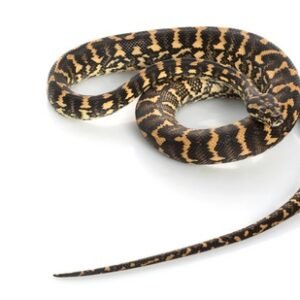Overview and Characteristics of Blood Red Corn Snakes
Blood red corn snakes, a notable morph of the eastern corn snake (Pantherophis guttatus), are particularly distinguished by their striking coloration. These snakes are easily recognized by their vibrant, deep red scales, which often have bright orange or yellow undertones. This vivid coloration is a result of selective breeding, aimed at enhancing their aesthetic appeal among snake enthusiasts. Blood red corn snakes typically exhibit a pattern of splotches along their dorsal area, contrasting vividly with their bright scales, setting them apart from other corn snake morphs.
In terms of physical characteristics, blood red corn snakes generally reach lengths of 4 to 5.5 feet as adults. Their bodies are slender, with a smooth scale texture that feels soft to the touch. The head shape of blood red corn snakes is distinctive, being slightly triangular and narrower than their bodies. This morphology not only enhances their beauty but also aids in their natural behaviors, such as hunting and burrowing. Common variations within the blood red morph can include differences in the intensity of color, patterns of blotching, and even the presence of albinism or anerythristic traits.
When considering their natural habitats, blood red corn snakes are predominantly found in the southeastern United States, favoring environments such as grasslands, forests, and agricultural areas. They demonstrate a broad adaptability to various ecosystems, which aids in their geographic proliferation. In the wild, these snakes are primarily nocturnal, utilizing their keen sense of smell and vision to hunt for prey, which mainly consists of small rodents. Their behavior is characterized by a combination of stealth and agility, allowing them to thrive in their natural surroundings. Overall, the captivating features and behaviors of blood red corn snakes contribute to their popularity among reptile enthusiasts, who appreciate both their beauty and unique characteristics.
Care and Maintenance of Blood Red Corn Snakes in Captivity
Blood red corn snakes are popular pets due to their striking appearance and relatively easy care. Proper housing is paramount for ensuring the health and well-being of these animals. An enclosure that mimics their natural habitat is essential. A secure terrarium of at least 20 gallons is recommended for adult snakes, with a solid lid to prevent escapes. It should contain a substrate, such as aspen shavings or cypress mulch, which allows for burrowing and retains moisture well.
Temperature and humidity represent crucial factors in the care of blood red corn snakes. The temperature gradient within the enclosure should range from 75°F (24°C) on the cooler side to 85°F (29°C) on the warm side, with a basking spot of up to 88°F (31°C). A heat source, such as an under-tank heater, can help manage these temperature levels. Additionally, maintaining humidity between 40% to 60% is important. This can be achieved through misting and providing a water bowl large enough for the snake to soak in if needed.
Feeding blood red corn snakes involves offering appropriately-sized prey. Hatchlings typically consume pinky mice, while adults may enjoy larger mice, rats, or even rats in some cases. It is advisable to feed them every 5 to 7 days, and it is best to offer thawed frozen prey to prevent potential injuries. Monitoring their health is also essential; be vigilant for signs of shedding problems, refusal to eat, or changes in behavior, which could indicate health issues.
Handling blood red corn snakes requires care and respect. It is crucial to support their body adequately and avoid sudden movements, which can stress them. Regular interaction aids in building trust, fostering a positive relationship between the snake and owner. By understanding their natural instincts and behaviors, one can ensure a harmonious partnership with these remarkable reptiles.

